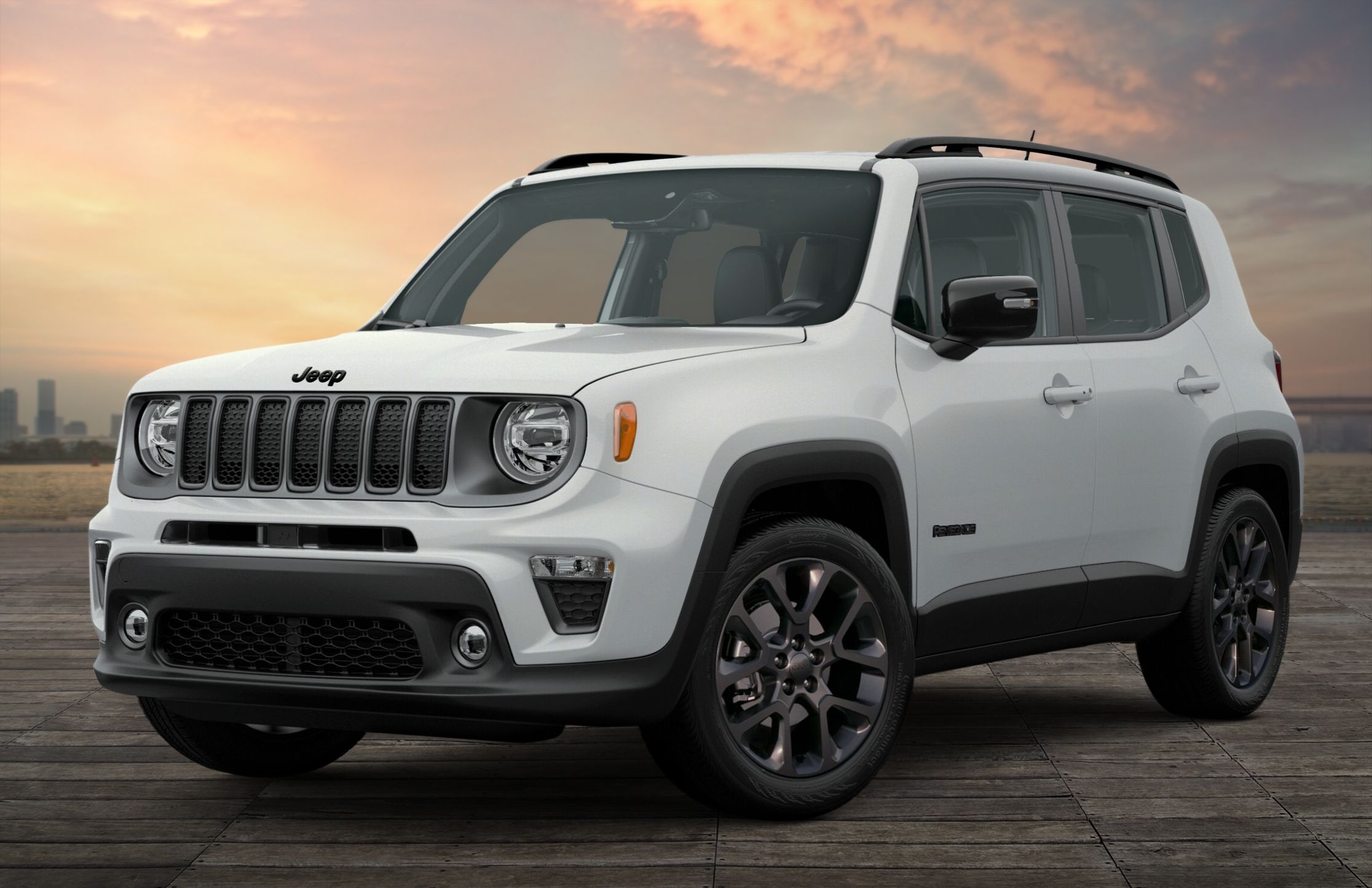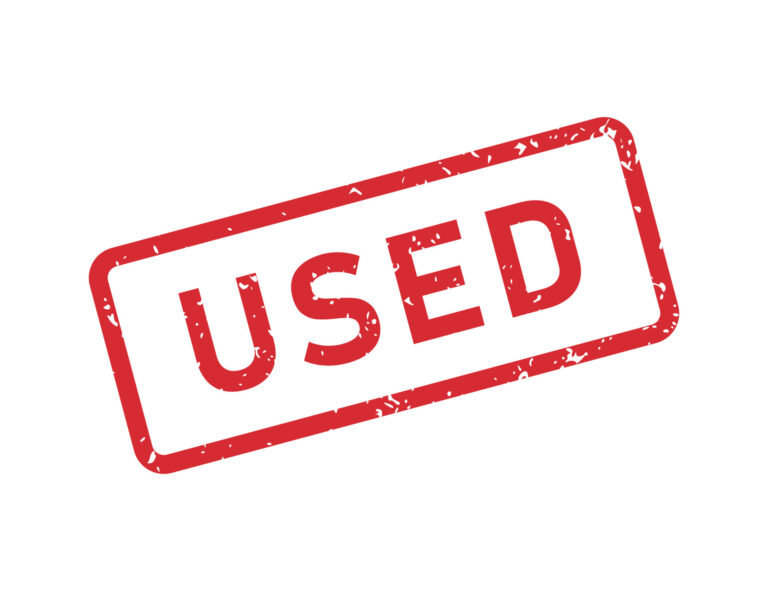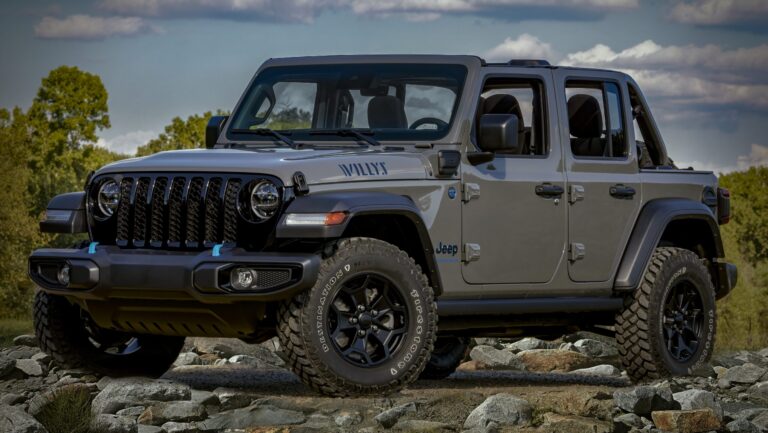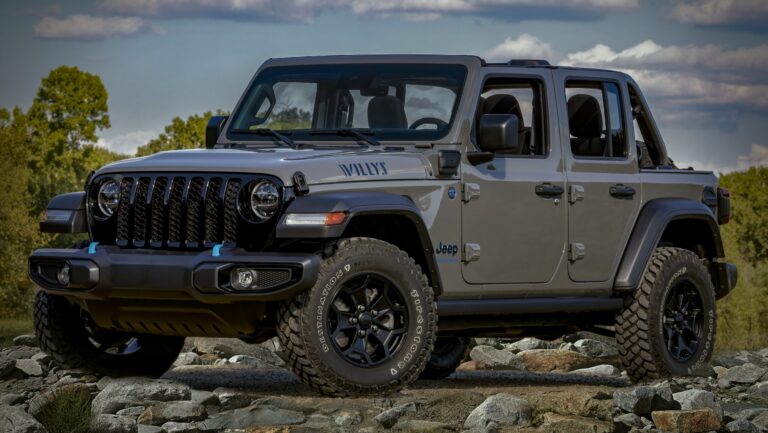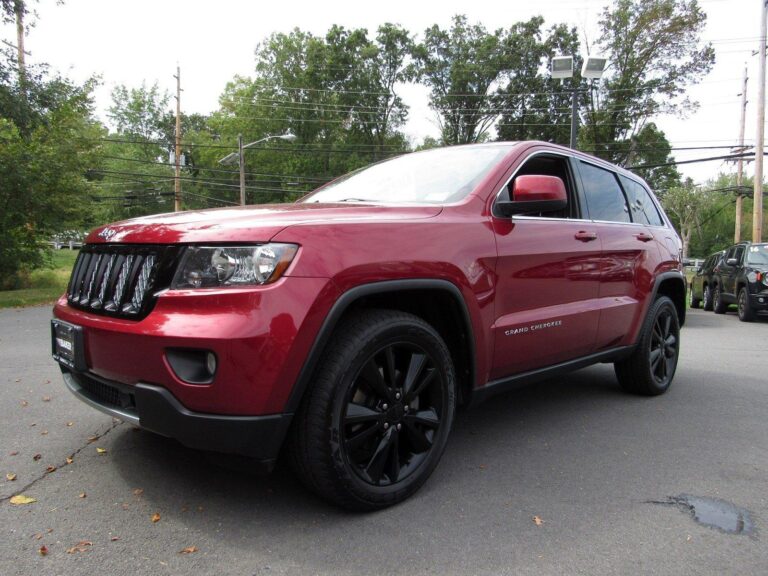Jeep Dana 44 For Sale: Your Ultimate Guide to Finding and Buying the Perfect Upgrade
Jeep Dana 44 For Sale: Your Ultimate Guide to Finding and Buying the Perfect Upgrade jeeps.truckstrend.com
For any serious Jeep enthusiast, the term "Dana 44" conjures images of rugged durability, enhanced off-road prowess, and the confidence to tackle more challenging terrain. More than just a piece of metal, the Dana 44 axle represents a significant upgrade from the weaker stock axles found in many Jeeps, offering a robust foundation for larger tires, lower gearing, and more aggressive off-road driving. Whether you’re planning to conquer rock crawling trails, navigate muddy forests, or simply seek a more reliable drivetrain for your adventure rig, the quest for a "Jeep Dana 44 For Sale" is a common and exciting journey.
This comprehensive guide is designed to navigate you through everything you need to know about purchasing a Dana 44 axle for your Jeep. We’ll explore why it’s a coveted upgrade, where to find them, what to look for, and crucial considerations to ensure you make an informed decision that elevates your Jeep’s capabilities.
Jeep Dana 44 For Sale: Your Ultimate Guide to Finding and Buying the Perfect Upgrade
Why Choose a Dana 44 for Your Jeep? The Benefits Unpacked
The allure of the Dana 44 stems from its superior design and construction compared to its lighter-duty counterparts, such as the Dana 30 commonly found in the front of many Jeeps. Here’s why it’s the axle of choice for countless off-roaders:
- Enhanced Strength and Durability: The Dana 44 features a larger ring and pinion gear, stronger axle tubes, and more robust bearings than a Dana 30. This increased mass and engineering translate directly into greater resistance against bending, breaking, and general wear and tear, especially under the stress of larger tires and aggressive driving.
- Accommodates Larger Tires: While a Dana 30 might handle up to 33-inch tires with care, the Dana 44 is generally considered robust enough for 35-inch and even 37-inch tires, especially with mild upgrades like chromoly shafts. This opens up a world of new terrain for your Jeep.
- Superior Gearing Options: The larger ring and pinion allow for a wider range of gearing options. This is crucial when upgrading tire size, as proper gearing restores lost power, improves fuel economy (relative to the larger tires), and enhances low-speed control for crawling.
- Increased Aftermarket Support: The Dana 44 is one of the most widely supported axles in the aftermarket. This means a plethora of options for lockers, limited-slip differentials, chromoly axle shafts, heavy-duty diff covers, and truss kits, allowing for further customization and reinforcement.
- Peace of Mind: Knowing your axle can withstand the demands of the trail provides a significant boost in confidence, allowing you to push your Jeep harder without fear of catastrophic failure.

For those considering a full-blown Dana 60 swap, the Dana 44 often strikes a perfect balance. While the Dana 60 is undeniably stronger, it’s also significantly heavier, more expensive, and often overkill for Jeeps running up to 37-inch tires. The Dana 44 provides an excellent strength-to-weight ratio for most serious trail rigs.
Identifying Your Dana 44 Needs: Front vs. Rear, Housing Types & Application
Before you begin your search for a "Jeep Dana 44 For Sale," it’s critical to understand the variations and what will best suit your specific Jeep model and intended use.
Front Dana 44 vs. Rear Dana 44

- Front Dana 44: Often found in the front of Jeep TJ Rubicons, JK Rubicons, and some older Wagoneers or J-trucks. Key distinctions include high-pinion (HP) vs. low-pinion (LP) designs. High-pinion axles, like those in the TJ Rubicon front or sourced from a Ford F-150/Bronco (HP44), offer better driveshaft angle and strength under forward load, making them highly desirable for front applications.
- Rear Dana 44: Common in the rear of Jeep TJs, JKs, JKLs, and some XJ/MJ models. Rear axles are typically low-pinion and vary significantly in width and bolt pattern (e.g., 5×4.5" for TJ/XJ, 5×5" for JK, 5×5.5" for older CJs).
Housing Types and Origins

- Cast Iron Housings: The most common type, found on factory Dana 44s. These are durable but can be susceptible to bending the axle tubes under extreme stress, necessitating aftermarket trussing or gussets.
- Fabricated Housings: Available from aftermarket manufacturers (e.g., Currie, Dynatrac). These are typically made from steel plate, welded together, offering superior strength, custom widths, and often lighter weight.
- Application-Specific Dana 44s:
- TJ Rubicon Dana 44s: Highly sought after for TJ/LJ owners due to direct fitment and the inclusion of factory lockers (air-actuated). The front is a high-pinion design.
- JK Rubicon Dana 44s: Stronger than TJ versions, with larger axle tubes and sometimes larger axle shafts. Front and rear are low-pinion designs. Often wider than TJ axles.
- Wagoneer/Cherokee Chief (FSJ) Dana 44s: Popular for XJ/YJ/CJ swaps due to their desirable width (often close to XJ/YJ width) and high-pinion front design. Requires custom spring perches and control arm mounts.
- Ford Dana 44s (HP44): Sourced from F-150s, Broncos, or full-size Jeeps (J-trucks/Wagoneers). The high-pinion design makes them excellent candidates for front axle swaps, but they require significant modification (narrowing, new mounts).
Where to Find a Jeep Dana 44 For Sale
Your search will primarily involve two main avenues: the used market and new aftermarket options.
1. The Used Market
This is often the most cost-effective way to acquire a Dana 44, but it requires diligence and careful inspection.
- Online Marketplaces:
- Craigslist & Facebook Marketplace: Excellent for local finds. Search terms like "Jeep Dana 44," "TJ Rubicon axles," "JK Rubicon take-offs." Be prepared to travel.
- Dedicated Off-Road/Jeep Forums: Websites like JK-Forum.com, Jeepforum.com, Pirate4x4.com, and local Jeep club forums often have "for sale" sections. These are great because sellers are usually fellow enthusiasts who understand what they’re selling.
- eBay: Can be good for specific parts or complete axles, but shipping can be prohibitive due to weight.
- Local Junkyards/Salvage Yards: A goldmine for potential finds, especially older Dana 44s from full-size Jeeps or Ford trucks. Call ahead to check inventory.
- Off-Road Shops & Fabricators: Many shops that perform axle swaps will have "take-off" axles for sale, or they may know where to source them.
- Word of Mouth: Network with local Jeep clubs and enthusiasts. Someone might be upgrading and selling their existing Dana 44s.
Pros of Used: Significantly cheaper, can often find complete axle assemblies with gearing/lockers.
Cons of Used: Condition varies widely, potential for hidden damage, no warranty, may require additional repairs/upgrades.
2. New Aftermarket Dana 44s
For those seeking ultimate strength, custom specifications, or simply a brand-new component, aftermarket manufacturers offer complete Dana 44 assemblies.
- Major Brands: Currie Enterprises, Dynatrac, G2 Axle & Gear, TeraFlex, Eaton Performance.
- Types: Available as bare housings, semi-complete (housing, tubes, diff cover), or complete "crate axles" with shafts, gearing, and lockers installed.
- Customization: You can order them built to your exact specifications: width, bolt pattern, gearing, locker choice, and even trussing.
Pros of New: Brand new components, superior strength (often), custom options, warranty, no hidden issues.
Cons of New: Significantly more expensive, often requires a lead time for custom builds.
3. Rebuilt/Refurbished Dana 44s
A middle ground often provided by specialized axle shops. These are used Dana 44s that have been stripped down, inspected, had worn components replaced (bearings, seals, gears), and are sold in a ready-to-install condition, often with a limited warranty.
Key Considerations When Buying a Dana 44
Purchasing an axle is a significant investment. Here’s a checklist of crucial factors to scrutinize:
- Condition of the Housing: Inspect for bends, cracks, or severe rust. Pay close attention to the axle tubes and differential housing. A bent tube is a major problem.
- Gearing: What gear ratio is installed? Does it match your desired ratio for your tire size? If you’re buying a front and rear, ensure the ratios match exactly. If not, budget for a re-gear.
- Locker/Limited Slip: Is a locker or limited-slip differential installed? Is it functional? Test it if possible. Factory lockers (like those in Rubicons) are a huge bonus but check their working condition.
- Axle Shafts: Are they stock or upgraded chromoly? Check for any twists, bends, or damaged splines.
- Brakes: What’s the condition of the rotors, calipers, and pads? What bolt pattern are the hubs? Ensure it matches your wheels.
- Mounts and Brackets: Are the spring perches, control arm mounts, and track bar mounts compatible with your Jeep? If not, you’ll need to cut them off and weld on new ones, which adds to the cost and complexity.
- Pinion Yoke: What type of yoke is on the axle (1310, 1350)? Does it match your driveshaft?
- Steering Components (Front Axle): If it’s a front axle, are the knuckles, ball joints, and steering linkages in good condition?
- Fluid Leaks: Check around the pinion seal, differential cover, and axle tube seals for leaks.
- Play and Noise: Grasp the pinion yoke and try to twist it. Excessive play could indicate worn gears or bearings. Rotate the wheels (if possible) and listen for grinding or humming noises.
- Price: Compare prices across different sellers and sources. Factor in potential shipping costs, as axles are heavy and expensive to transport.
- Seller Reputation: If buying used, check the seller’s reputation. Ask questions, request detailed photos or videos, and ideally, inspect in person.
Estimated Price Guide: Jeep Dana 44 For Sale
Prices for Dana 44 axles vary significantly based on condition, included components (gears, lockers, shafts), and the specific Jeep model it came from. The table below provides a general price range for "Jeep Dana 44 For Sale" in the current market (USD), acknowledging that these are estimates and can fluctuate.
| Type of Dana 44 | Condition/Features | Price Range (USD) | Common Inclusions | Common Exclusions/Additional Costs |
|---|---|---|---|---|
| Used Stock Dana 44 (Bare) | Pulled from vehicle, no gears/locker, needs rebuild | $300 – $800 | Bare housing, tubes, diff cover, maybe shafts | Re-gearing, locker, new shafts, bearings, seals, installation |
| Used Stock Dana 44 (Complete) | Pulled from vehicle, original gears, no locker | $700 – $1,500 | Housing, tubes, diff, shafts, brakes, factory gears | Re-gearing (if needed), locker, new bearings/seals, installation |
| Used TJ/JK Rubicon Dana 44 (Complete) | Pulled from Rubicon, factory locker, stock gears | $1,500 – $3,500+ | Housing, tubes, diff, shafts, factory locker, brakes, factory gears | Re-gearing (if needed), new bearings/seals, installation |
| Used Upgraded Dana 44 | Aftermarket shafts, truss, re-geared, locker | $2,000 – $4,500+ | As-is, often ready to bolt in (if matched) | Installation, potential minor repairs, re-gearing if ratio unsuitable |
| Rebuilt/Refurbished Dana 44 | Professionally rebuilt, new bearings/seals, often geared | $2,500 – $5,000+ | Complete axle, often with choice of gears/locker | Installation, shipping |
| New Aftermarket Dana 44 (Entry-Level) | Bare housing or complete with basic components | $3,000 – $6,000+ | Stronger housing, tubes, choice of width | Gears, locker, shafts, brakes, installation |
| New Aftermarket Dana 44 (Premium "Crate") | Built-to-order, custom width, chromoly, gears, locker | $7,000 – $12,000+ | Complete, ready to bolt in (specific application) | Installation, shipping |
Note: Prices can vary significantly by region, demand, and specific vehicle application. "Complete" generally means the axle comes with differential, axle shafts, and brake components, but not necessarily a locker or desired gear ratio.
Installation and Further Upgrades
Once you’ve secured your Dana 44, the next step is installation. This can range from a relatively straightforward bolt-in swap (e.g., TJ Rubicon axle into another TJ) to a complex cut-and-weld fabrication project (e.g., Ford HP44 into an XJ). If you’re not an experienced fabricator, budgeting for professional installation by a reputable off-road shop is highly recommended.
Common upgrades to consider after acquiring a Dana 44 include:
- Chromoly Axle Shafts: Stronger than stock, especially for larger tires.
- Trussing and Gussets: Reinforce the axle tubes and C-knuckles (front axle) to prevent bending.
- Heavy-Duty Diff Covers: Protect the differential from impacts.
- Locker/Limited Slip Differential: If your purchased axle doesn’t have one, this is a must-have for serious off-roading.
- Re-gearing: Essential if the installed ratio doesn’t match your tire size or intended use.
Challenges and Solutions
- Mismatched Ratios: If your new Dana 44 has a different gear ratio than your other axle (or if you’re only swapping one axle), you must re-gear to match. Driving with mismatched ratios will destroy your transfer case.
- Incorrect Width/Bolt Pattern: Axle width is critical for tire clearance and stance. If it’s too wide or too narrow, or if the bolt pattern doesn’t match your wheels, you’ll need to consider wheel spacers/adapters (often not ideal), new wheels, or axle shaft replacement/custom housing work.
- Damaged Axle: If you buy a used axle, be prepared for potential hidden issues. Budget for new bearings, seals, and potentially even new gears or shafts.
- Shipping Costs: Axles are heavy! If buying remotely, freight shipping can be hundreds of dollars. Local pickup is always preferred.
Frequently Asked Questions (FAQ)
Q1: Can I put a Dana 44 in my stock Jeep XJ/TJ/YJ?
A1: Yes, but it’s rarely a direct bolt-in unless you’re swapping a TJ Rubicon axle into a non-Rubicon TJ. Most other swaps (e.g., Ford HP44 into an XJ, or a JK Dana 44 into a TJ) will require cutting off old mounts and welding on new spring perches, control arm mounts, and track bar mounts.
Q2: What’s the difference between a high-pinion (HP) and low-pinion (LP) Dana 44?
A2: A high-pinion axle (HP) has the pinion gear positioned above the centerline of the axle shaft, while a low-pinion (LP) has it below. HP axles are generally stronger for front applications when driving forward, as the gear teeth are loaded on the drive side, and they offer better driveshaft clearance. LP axles are better for rear applications as they load the stronger coast side of the gear under acceleration.
Q3: Do I need to re-gear if I swap a Dana 44?
A3: Yes, if the gear ratio in the new Dana 44 is different from your other axle, or if you’re installing larger tires than what the current gearing is optimized for. Driving with mismatched ratios will damage your drivetrain.
Q4: How much does it cost to install a Dana 44?
A4: Installation costs vary widely depending on the complexity of the swap (bolt-in vs. custom fabrication) and labor rates. A professional shop might charge anywhere from $800 to $3000+ for installation alone, not including any necessary parts like new mounts, driveshafts, or re-gearing.
Q5: Is a Dana 44 strong enough for 40-inch tires?
A5: Generally, no. While some extreme builds might attempt it with heavily reinforced Dana 44s, it’s pushing the limits. A Dana 44 is typically recommended for up to 37-inch tires with chromoly shafts and other reinforcements. For 40-inch tires and larger, a Dana 60 or larger is usually recommended.
Q6: Where can I find the best deal on a Dana 44?
A6: The used market (Craigslist, Facebook Marketplace, forums) typically offers the best prices, but you assume the risk of the axle’s condition. Always inspect thoroughly or have a professional do so. Sometimes, finding a wrecked Rubicon as a donor vehicle can yield good deals on axles.
Conclusion
The pursuit of a "Jeep Dana 44 For Sale" is a testament to the desire for enhanced capability and reliability in your off-road adventures. A Dana 44 axle is a significant upgrade that unlocks new potential for your Jeep, allowing for larger tires, lower gearing, and the confidence to tackle more challenging trails.
By understanding the different types of Dana 44s, knowing where to source them, and diligently inspecting potential purchases, you can make an informed decision that will serve your Jeep well for years to come. Remember to factor in not just the purchase price, but also potential costs for re-gearing, installation, and any necessary repairs or upgrades. With careful planning and a discerning eye, your investment in a Dana 44 will undoubtedly pay off in countless miles of reliable, high-performance wheeling.

